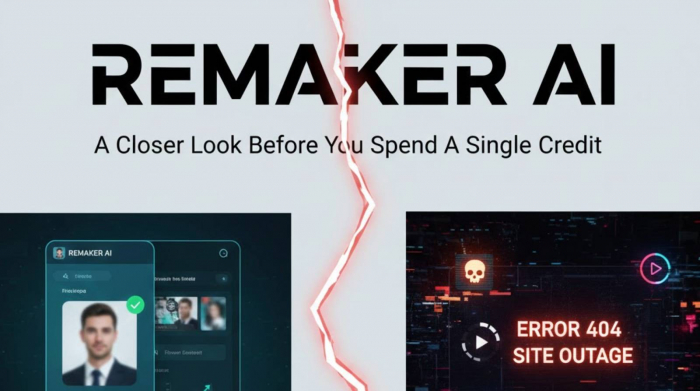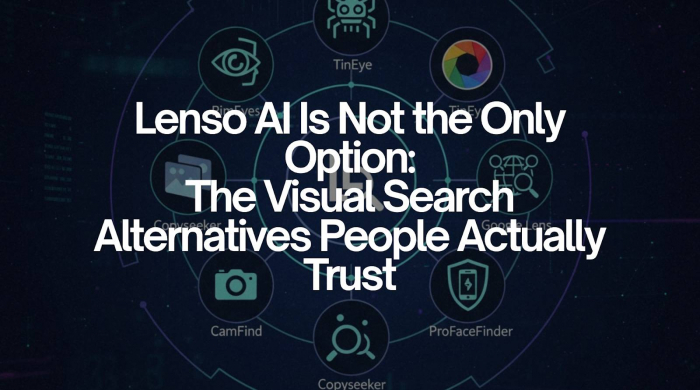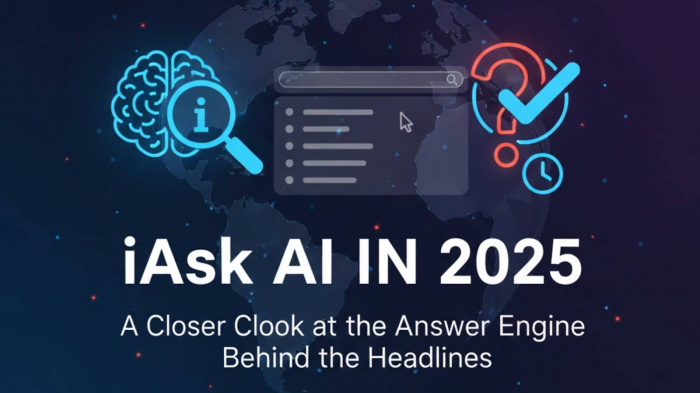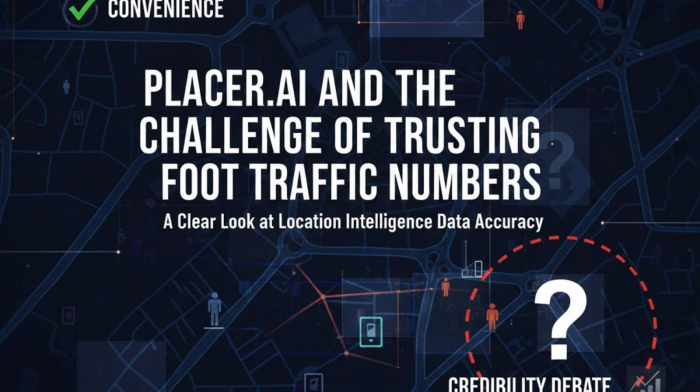Table of Content
- Why AI Directories Matter in 2025
- What is Toolify.ai? Full Platform Overview
- How Toolify.ai Organizes 26,000+ Tools into 450+ Categories
- Exploring the “Free AI Tools” Section: How Reliable Is It?
- Categories in Depth: From Text-to-Image to Code Assistants
- Ranking Systems Explained: Most Used, Most Saved, and Revenue Leaders
- Spotlight on GPTs and Chrome Extensions Inside Toolify
- AI Apps on Toolify: iOS and Android Coverage for Everyday Users
- “New Tools” Feed: How Fast the Database Updates
- How Accurate Are Toolify’s Listings? (Scraping vs. Manual Data)
- What Developers Should Know About Submitting & Updating Listings
- Advertising on Toolify: Visibility and Costs
- Toolify Reviews: What Users Actually Say
- Similarweb Data: Competitors Stealing Market Share
- Comparing Toolify with There’s An AI For That, TopAI.tools, and Creati.ai
- SEO Footprint of Toolify: Why It Ranks on Google so Often
- Common Criticisms: Ads, Update Tokens, and Data Accuracy
- Case Study: Finding the Best Text-to-Video Tools via Toolify
- Should You Trust Rankings for Business Decisions?
- Final Verdict: Strengths, Weaknesses, and Future of Toolify.ai
Why AI Directories Matter in 2025
The pace of AI innovation has reached a point where discovery is as hard as development. New platforms for image generation, workflow automation, or coding assistants appear almost daily, and the question for most users is not “what exists” but “what should I use.” This challenge has created an entire market for AI directories, platforms that act as searchable maps of the ecosystem. Among them, Toolify.ai has become one of the most widely visited options in 2025, claiming to list more than 26,000 tools across over 450 categories.
_1757654616.png)
What makes Toolify notable is not just the scale but the structure: users can explore through tags, categories, or ranking filters. Yet, like any aggregator, its strengths and weaknesses depend on how you use it.
What is Toolify.ai? Full Platform Overview
At its simplest, Toolify is a catalogue and ranking engine for AI software. The homepage organizes tools under banners like New AI tools, Most Used this month, or Trending by region. Each listing includes a short description, category tags, and a direct link to the vendor’s site, making it a discovery portal rather than a hosted marketplace.
Independent reviews such as EDUCBA’s analysis of Toolify emphasize that its primary value lies in aggregation: instead of searching across dozens of sources, you can rely on Toolify to centralize results. However, the site doesn’t vet quality in the way curated reports might—it reflects popularity signals, not editorial judgment.
How Toolify.ai Organizes 26,000+ Tools into 450+ Categories
One of Toolify’s defining features is its granular taxonomy. The category page showcases everything from broad buckets like “Productivity” to hyper-specific areas like “AI Agents” or “AI in Legal Tech.”
_1757654639.png)
For example, the Text-to-Image category alone lists more than 800 tools, from advanced diffusion model interfaces to lightweight mobile apps. The scale is both a strength and a challenge: while it offers breadth, it also forces users to filter aggressively. This design reflects Toolify’s role as a first layer of discovery, not the final step of evaluation.
Exploring the “Free AI Tools” Section: How Reliable Is It?
Budget is one of the main reasons people turn to directories. Toolify has created a dedicated Free AI tools tag, which gathers tools that either have free tiers or operate entirely without cost.
This feature is particularly attractive for students, creators, or startups experimenting before scaling. That said, many “free” listings come with practical limits—watermarked outputs, daily credit caps, or restricted export formats. In other words, Toolify does surface genuinely free options, but as multiple reviewers on Product Hunt have noted, it’s better treated as a trial discovery engine than a replacement for paid services.
Categories in Depth: From Text-to-Image to Code Assistants
The breadth of Toolify’s catalogue mirrors the variety of AI use cases:
- Text-to-Image tools include over 800 options, ranging from quick artistic generators to enterprise-grade design platforms.
- Coding assistants compete with GitHub Copilot, offering debugging, code completion, and documentation support.
- Business productivity tools cover everything from AI presentation builders to financial report generators.
By clicking into a category, users can quickly scan multiple competitors in one space. For comparison, platforms like There’s An AI For That often highlight fewer entries but provide older listings, whereas Toolify opts for scale plus ranking filters.
Ranking Systems Explained: Most Used, Most Saved, and Revenue Leaders
Toolify differentiates itself through layered ranking signals. The homepage showcases sections like Most Used this month, Most Saved, or Top by Revenue. According to the official directory, these lists refresh regularly and are based on usage patterns and submissions.
However, popularity is not the same as quality. A tool can trend in “Most Used” because of viral marketing, not necessarily because it delivers consistent results. Similar doubts are reflected in Product Hunt comments, where some users praise the convenience but warn against taking rankings at face value.
Spotlight on GPTs and Chrome Extensions Inside Toolify
Beyond categories, Toolify has sections that often get overlooked in traditional stores. Its GPTs hub aggregates custom ChatGPT agents designed for narrow use cases—everything from resume reviewers to travel planners. Likewise, the Chrome Extensions directory highlights small utilities that streamline browser tasks like summarizing articles or grammar checking.
These sections fill a gap because GPTs and browser add-ons can be hard to find in mainstream app stores. Toolify makes them searchable alongside major AI software.
AI Apps on Toolify: iOS and Android Coverage for Everyday Users
Toolify also functions as an app discovery portal. By tagging tools with mobile compatibility, it helps users identify which products are available for iOS or Android. This is especially useful since mobile AI apps often have fragmented visibility across the App Store, Google Play, or third-party sites. Platforms like WebCatalog even wrap Toolify itself into a desktop app for cross-platform use, showing how widely its data is being repurposed.
“New Tools” Feed: How Fast the Database Updates
A key section on Toolify’s New page highlights the latest additions. For early adopters, this is arguably the most valuable feature—it allows scanning of tools launched within days or weeks. Frequent updates are one reason the directory maintains its reputation for being “current,” even if accuracy can vary.
How Accurate Are Toolify’s Listings? (Scraping vs. Manual Data)
Accuracy remains a gray area. On Product Hunt reviews, some developers allege their tools were scraped without consent, while others note outdated information. Toolify does allow vendors to submit corrections, but updates require using tokens or “coins,” which adds friction.
This means users should treat Toolify as a discovery map rather than a verified source of record. Clicking through to official vendor websites remains essential for pricing, features, or compliance details.
What Developers Should Know About Submitting & Updating Listings
For creators, Toolify offers three paths:
- Submit a new tool.
- Update an existing listing using credits.
- Advertise via sponsored placements.
According to the submission portal, advertising increases visibility, but many developers argue that organic ranking is still influenced by popularity and platform metrics. Negative feedback on Product Hunt suggests the update process feels unnecessarily complex, though it provides a mechanism for corrections.
Advertising on Toolify: Visibility and Costs
Advertising plays a major role in how tools surface on Toolify. Sponsored listings can appear at the top of category or tag pages, giving visibility to newer or lesser-known products. While this creates revenue for the platform, it also means that “top” results might not always reflect user behavior. This balance between paid placement and organic ranking is a recurring criticism across directory reviews.
Toolify Reviews: What Users Actually Say
Feedback is mixed. Across multiple Product Hunt launches, Toolify averages about 3.8/5 stars. Users praise the convenience of finding everything in one place, while critics mention ads clutter, scraping concerns, and the coin-based update system. This duality suggests the platform is helpful for browsing but not always user-friendly.
Similarweb Data: Competitors Stealing Market Share
Traffic analytics on Similarweb show that Toolify’s main competitors are There’s An AI For That, TopAI.tools, and Creati.ai. Each has carved its niche: TAIFT with longevity, TopAI with simplicity, and Creati with curated selections. Toolify holds an advantage in scale, but market share is fragmented.
Comparing Toolify with There’s An AI For That, TopAI.tools, and Creati.ai
In practice:
- There’s An AI For That is often better indexed on Google for long-tail queries.
- TopAI.tools emphasizes a clean, ad-light interface.
- Creati.ai leans on curation over quantity.
This makes Toolify’s differentiator its sheer coverage and ranking filters, though it trades off polish and curation.
SEO Footprint of Toolify: Why It Ranks on Google so Often
According to SEMrush traffic data, Toolify captures search by creating thousands of auto-generated category and tag pages optimized for keywords like “Best Free AI Video Generators” or “Top AI Writing Tools.” This aggressive SEO explains why Toolify frequently appears on page one of Google results for emerging AI searches.
Common Criticisms: Ads, Update Tokens, and Data Accuracy
Criticism repeats across sources:
- Ads slow the browsing experience.
- Update tokens frustrate developers.
- Listings occasionally go stale or show incomplete details.
As highlighted in threads, these issues don’t negate its usefulness but reinforce that it should be treated as step one in research, not the final decision maker.
Case Study: Finding the Best Text-to-Video Tools via Toolify
Searching the Text-to-Video category is a good illustration. In one view, you see dozens of competing apps, each with a preview tile. From there, you can branch into pricing pages, trial accounts, or community reviews. This saves significant time compared to piecing together lists from blogs or Reddit threads.
Should You Trust Rankings for Business Decisions?
Rankings like “Most Used” or “Top by Revenue” give useful starting signals, but they can mislead. A business adopting a tool should still conduct trial runs, cost analyses, and security checks. Toolify provides discovery; validation rests with the user.
Final Verdict: Strengths, Weaknesses, and Future of Toolify.ai
Summarizing across Cutout.pro’s overview and user reviews, Toolify’s strengths are scale, visibility, and frequent updates. Weaknesses include ad density, update mechanics, and mixed accuracy. As competition from Creati.ai and TAIFT intensifies, its long-term survival may depend on refining the balance between volume and trust. For now, it remains one of the most comprehensive AI directories—but best used with a cautious, verification-first mindset.
Post Comment
Be the first to post comment!





